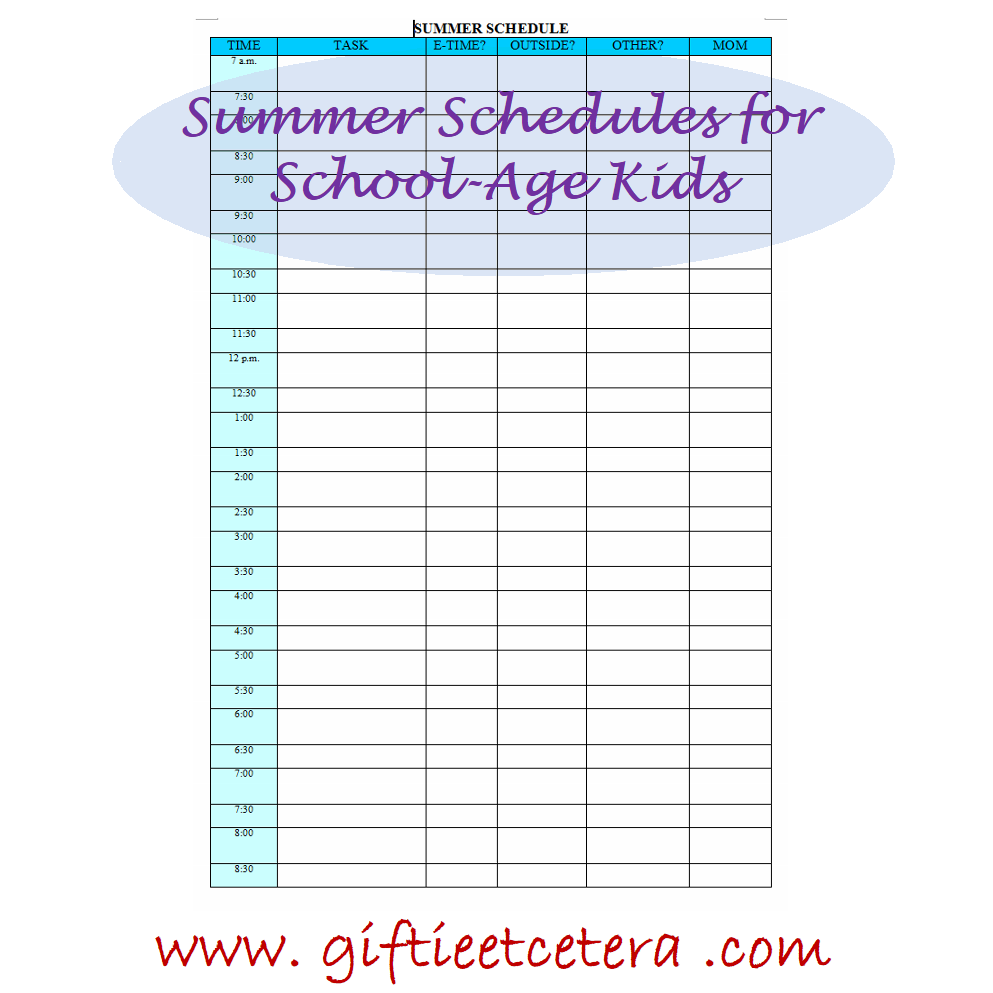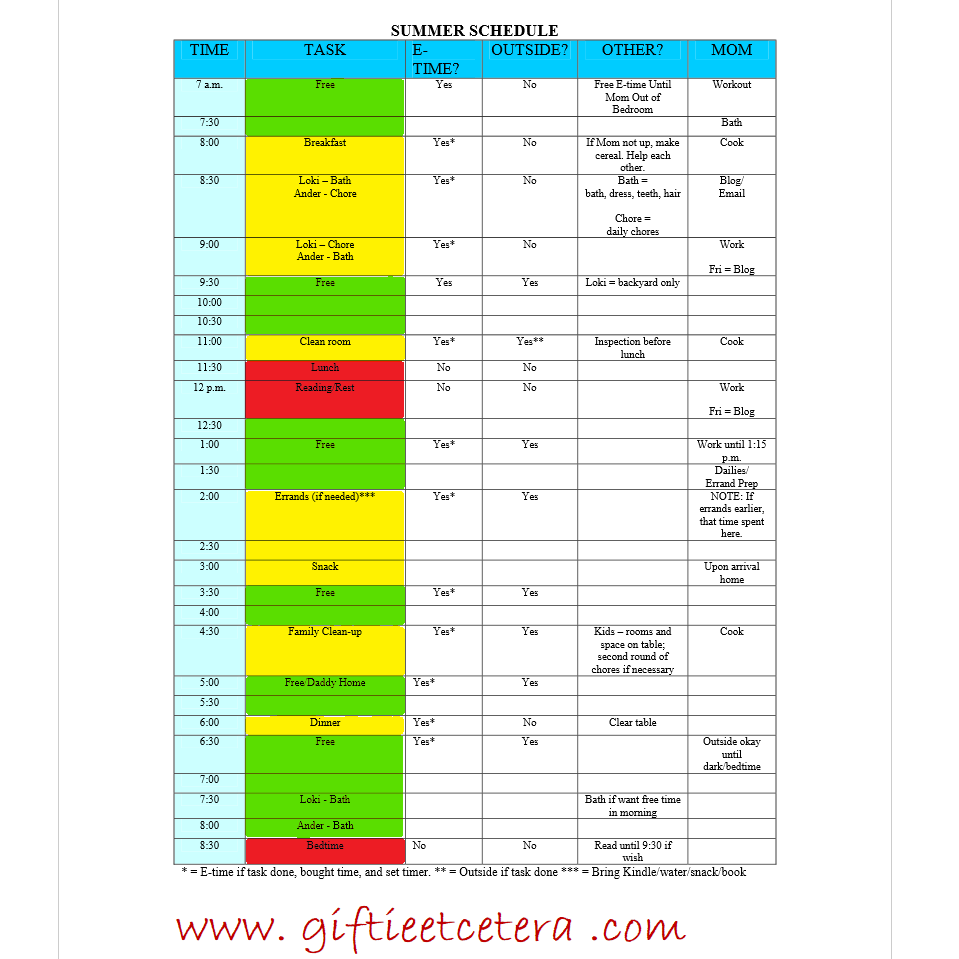I know a lot of homeschoolers read my blog, and I must confess: you astound me.
I could NEVER do what you do. (Okay, I could. But it is not my dream. I love my kids' school - and I am so thankful for that - because even with a Master of Education degree, I am terrified of those two months during the summer when I am in charge of my own children!)
But for you - and for my nonhomeschooling readers with kids home for the summer - I'm sharing how I set up a summer schedule that makes sense to my kids and to me.
How to set up a summer schedule:
1. Click here for a link to the blank form that I used (in Word). It's in half hour increments.
2. Adjust times to reflect your kids normal waking hours.
3. Input somewhat set times.
In my house, meals and snacks are pretty routine.
4. Input your wishes.
I like to take a bath before breakfast. I like the kids to do chores early in the day. I limit electronic time, but I am flexible about when the kids use it. These things get scheduled around set times.
For homeschoolers, this is where you put in schoolwork.
5. Input the rest.
Fill in all the spaces.
Everything we do each day gets entered somewhere. Baths, chores, cleaning bedrooms, reading, errands, family clean-up. (See the pic below for ideas!)
For those not scheduled, just note that they are "free." (There is a reason for this. I promise.)
6. Color code the kids' column.
Green = free time
Yellow = free time after activity or chore is done
Red = not free
This visual is so necessary for the kids. They don't really care what is next (except for food...my kids really care about when they next eat). They care about when they have to check with you and when they can just play.
TIP: Stress to your little ones that yellow times are an opportunity to get things done quickly to have even more free time!
7. Identify E-time and outside time.
If my kids do chores, they earn electronics' time (e-time). Also, I only want them outside when I can peek out the window. I went through the schedule and marked times when they can use electronics (if they have any in the bank) and times when they can and cannot go outside.
8. Color-code your schedule.
I use colors OFF the red light spectrum so the kids don't get confused.
Also, for my schedule, I only color-code non-free time.
Pink = self-care
Purple = homemaking
Orange = work (for my part-time job)
9. Post the schedule.
Put it where the kids can read it. When they ask about dinner for the 3,264th time, point them to the schedule.
10. Stick to it.
It really is important to stick to the routine as much as possible.
Some of the advantages include encouraging reading (because twice a day, the only other option is sleep), encouraging outside play, showing the kids that everyone has responsibilities, and making the day more predictable for kids who thrive on routine.
Loyal Readers know that I am not a huge fan of scheduling, but in the case of summer, I would not proceed without one!
Etcetera.
Linked at:




3 comments:
this is genius! thanks for sharing.
how can they get e-time? what is the rule? it is always hard to me say, what is "normal"
(I have 12, 10, and 6 y daughters)
The rule in our house:
1 free hour on non-school days
1 hour earned for normal daily chores
1 hour earned for any extra chores/cleaning room/helping mom (I am VERY generous with this during the summer)
Post a Comment